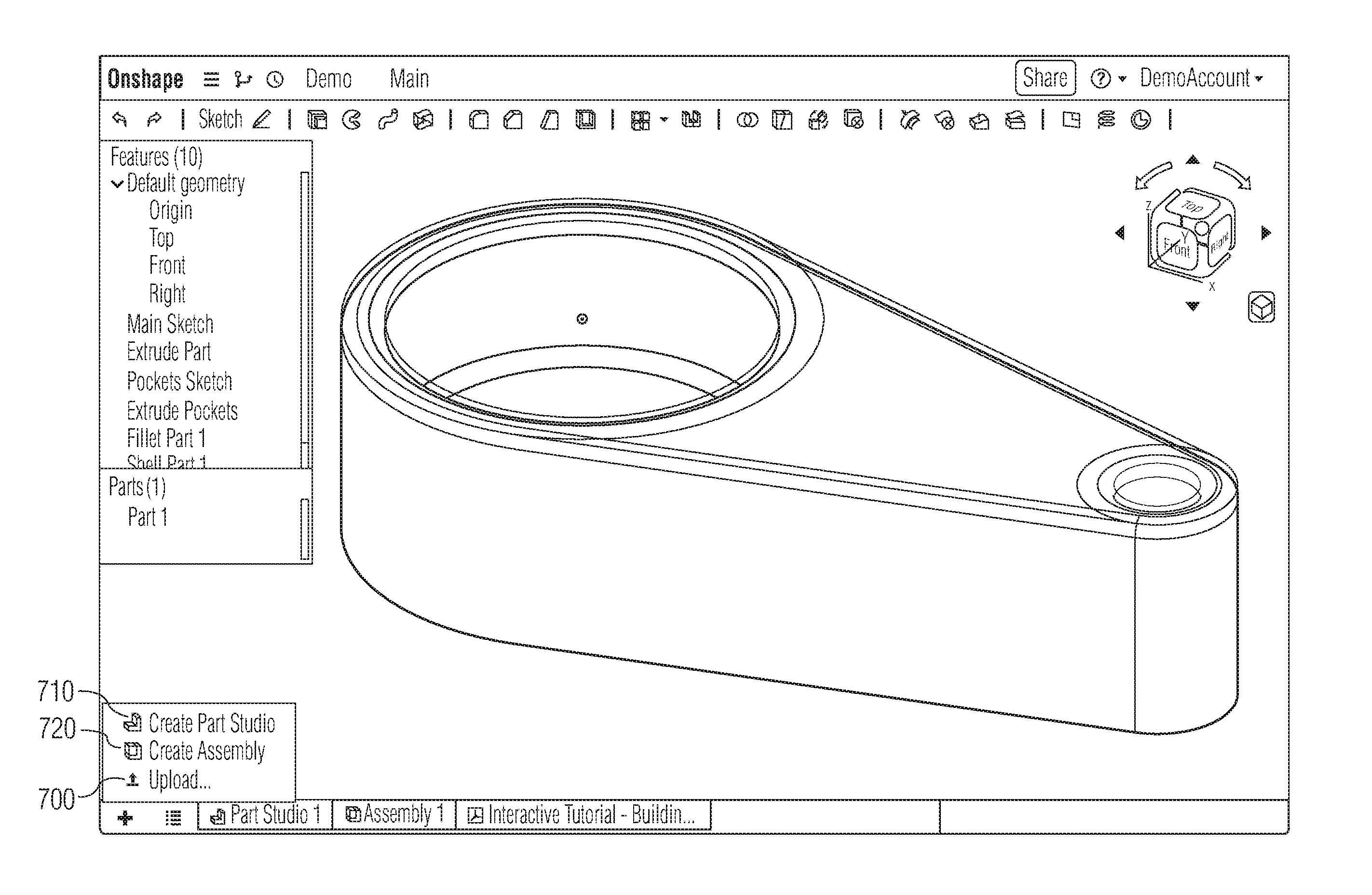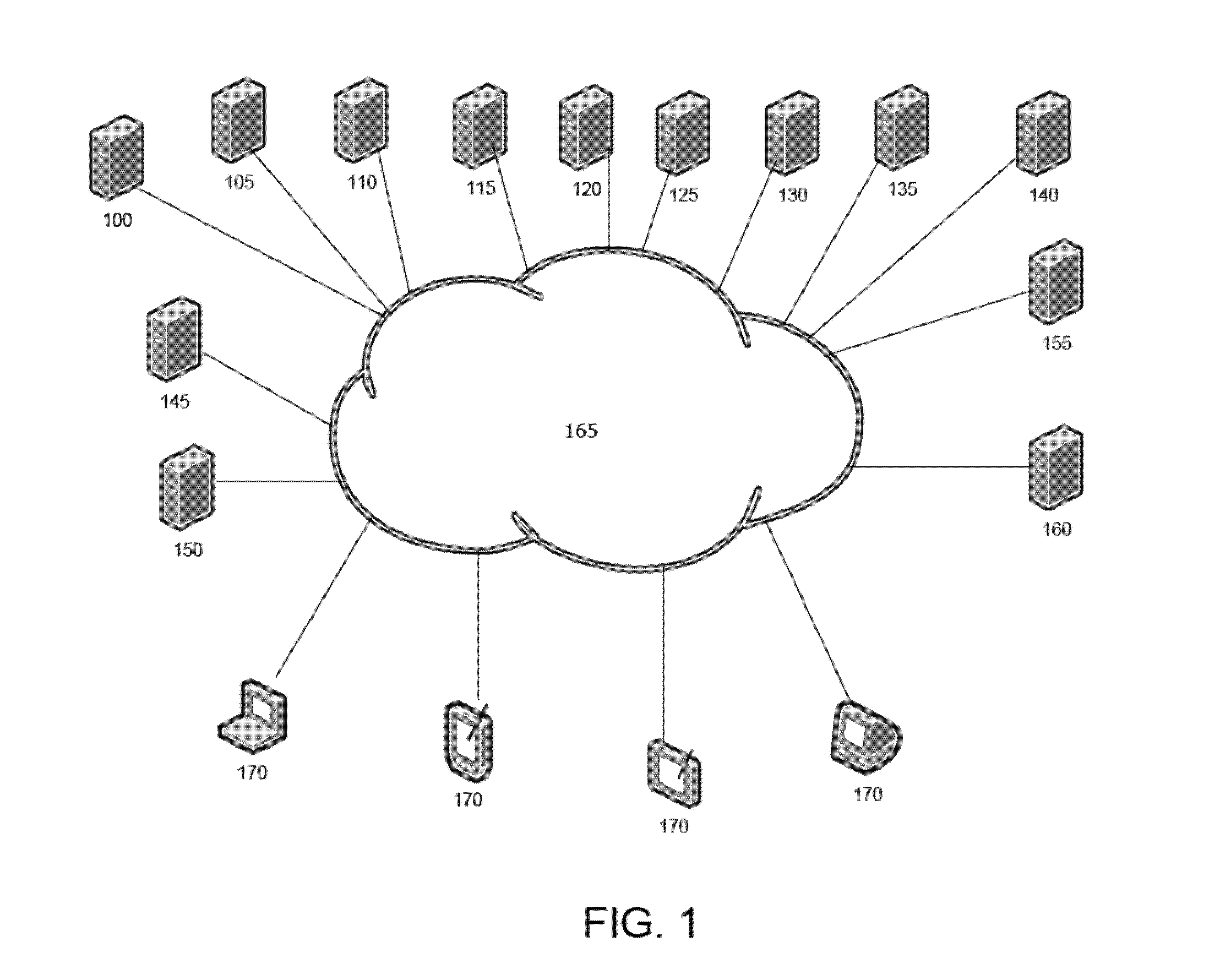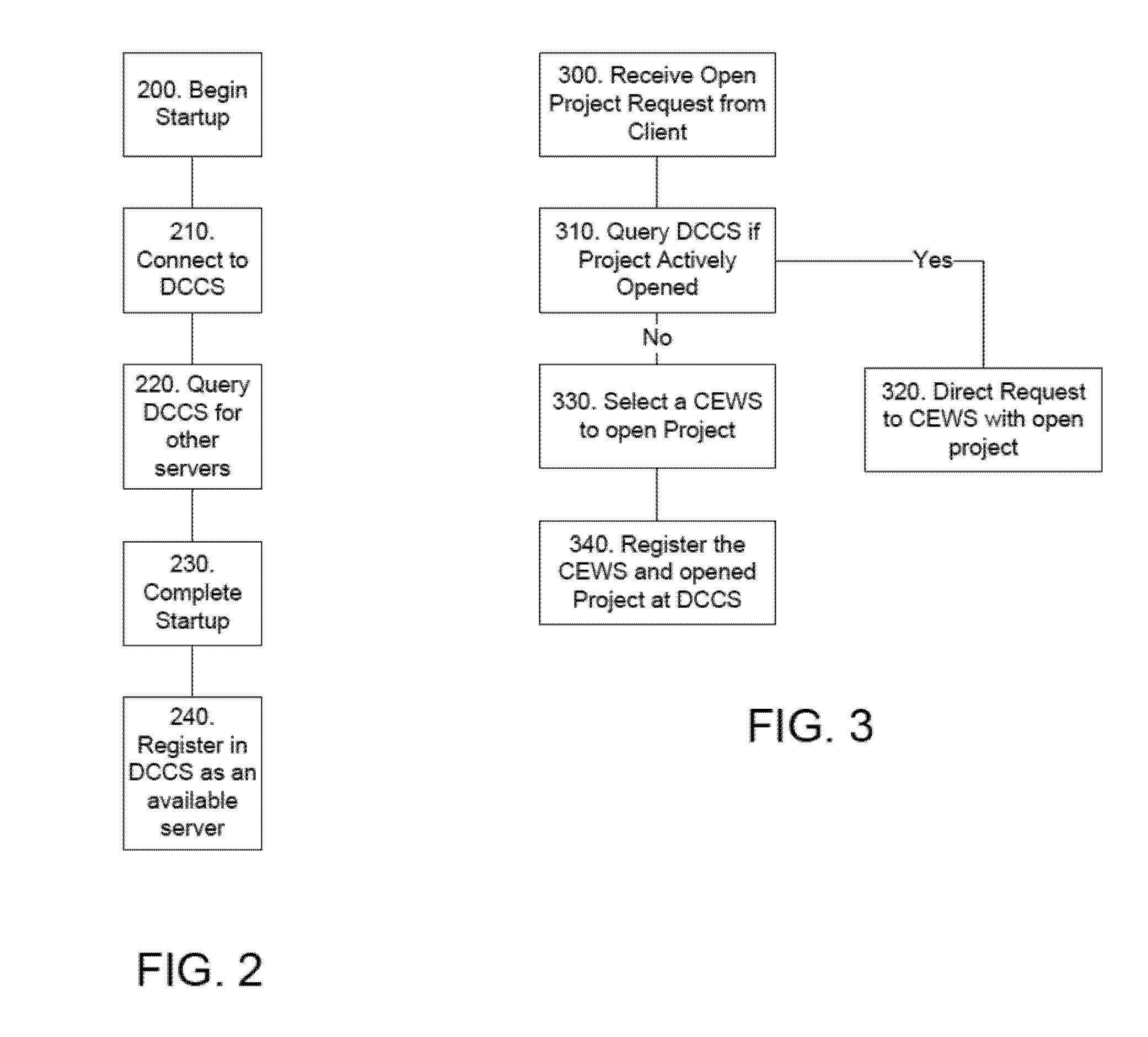Multi-User Cloud Parametric Feature-Based 3D CAD System
a feature-based, multi-user technology, applied in the field of computer aided design (cad), can solve the problems of difficult collaboration and synchronization work, lack of real mechanism of existing cad systems, and inability to meet the needs of users,
- Summary
- Abstract
- Description
- Claims
- Application Information
AI Technical Summary
Benefits of technology
Problems solved by technology
Method used
Image
Examples
Embodiment Construction
[0098]In the following detailed description, reference is made to the accompanying drawings which form a part hereof, and in which are shown, by way of illustration, specific embodiments which may be practiced. It is to be understood that other embodiments may be used, and structural changes may be made without departing from the presented scope.
TERMINOLOGY
[0099]The terminology and definitions of the prior art are not necessarily consistent with the terminology and definitions of this disclosure. Where there is a conflict, the following definitions apply.
[0100]Assembly—used to assemble parts. An Assembly is used to define the structure and behavior of an assembly. Each Assembly has its own Feature list that contains Instances (of parts and sub-assemblies), Mates, Mate Connectors, Groups, and Relations.
[0101]Back up geometry—reference to prior geometry which has been changed.
[0102]Branch—workspace for a specific version of a project.
[0103]Client Device—computer hardware, such as a de...
PUM
 Login to View More
Login to View More Abstract
Description
Claims
Application Information
 Login to View More
Login to View More - R&D
- Intellectual Property
- Life Sciences
- Materials
- Tech Scout
- Unparalleled Data Quality
- Higher Quality Content
- 60% Fewer Hallucinations
Browse by: Latest US Patents, China's latest patents, Technical Efficacy Thesaurus, Application Domain, Technology Topic, Popular Technical Reports.
© 2025 PatSnap. All rights reserved.Legal|Privacy policy|Modern Slavery Act Transparency Statement|Sitemap|About US| Contact US: help@patsnap.com



